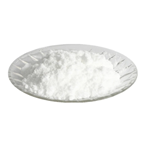The benefits of Kojic acid
Dec 28,2023
Description
Kojic acid (5-hydroxy-2-hydroxymethyl-4-pyrone) is a small organic molecule with many potential applications, from pharmaceuticals to biopolymers and cosmetics[1].
Uses
The compound possesses both antiparasitic and cytotoxic activity, while its derivatives have been investigated for their antimalarial, antimicrobial, antibacterial, antifungal, and cytotoxic properties, acting also as a tyrosinase inhibitor. Kojic acid also functions as a radioprotective agent, antioxidant, and radical scavenger. The parent compound and its derivatives are used as whitening agents in cosmetics. In agriculture, kojic acid has been investigated as a pesticide and insecticide. In polymer applications, the biological activity of kojic acid has been utilized, for example, in antimicrobial materials, while biodegradable polymers have been designed to release kojic acid[2].
Benefits
It is usually combined with other agents at a 1–4% concentration for its skin-lightening properties. The mechanism of its effect might be due to the reduction of melanin formation in melanocytes by tyrosinase inhibition.

As a bleaching agent and to protect the skin against the effects of ultraviolet rays in cosmetic products. As a teeth-whitening ingredient in oral care products. Several studies have evaluated the mechanism of pigmentation reduction and the safety of kojic acid in cosmetics. Accordingly, the best-recommended concentration range for topical kojic acid preparations is 1% or less to ensure efficacy and safety.
In patients with photosensitive melasma who received a cream therapy containing 1% kojic acid for 6 months, the results showed a significant improvement in skin color. High transepidermal kojic acid diffusion significantly reduces the amount of melanin produced. Even patients with melasma who used 1% kojic acid cream were followed for 2 years, and no significant adverse events or reactions were noted.
Besides that, another benefit of kojic acid has been showing antibacterial properties that can kill some common bacteria (e.g., acne-causing bacteria) even in small dilutions. Studies have also shown that kojic acid can fight fungi that live and cause disease on the skin.
References
[1] Lassfolk, Robert et al. “Chemo-enzymatic three-step conversion of glucose to kojic acid†.” Chemical Communications 98 (2019): 14737–14740.
[2] Shifali Chib. “Fungal production of kojic acid and its industrial applications.” Applied Microbiology and Biotechnology 107 7–8 (2023): 2111–2130.
- Related articles
- Related Qustion
- The application of Kojic acid Jun 24, 2022
Kojic acid is a pyranone that is 4H-pyran substituted by a hydroxy group at position 5, a hydroxymethyl group at position 2 and an oxo group at position 4.
- Uses of Kojic acid Mar 3, 2022
Kojic acid (5-hydroxy-2 hydroxymethyl-4-pyrone) is a hydrophilic fungal derivative acquired from Acetobacter, Penicillium, and Aspergillus species, which reduces pigmentation through the inhibition of free tyrosine kinase production. Additi
3-Nitrobenzoic acid is an off-white solid, it is used to prepare some dyes.....
Dec 28,2023Organic ChemistryUrea is a vital organic compound used extensively in various industries due to its unique molecular structure and properties. Understanding its structure is key to comprehending its reactivity and widespread applications.....
Dec 28,2023APIKojic acid
501-30-4You may like
- Kojic acid
-

- $15.00 / 1kg
- 2024-05-24
- CAS:501-30-4
- Min. Order: 1kg
- Purity: 99%
- Supply Ability: 600tons
- Kojic acid
-

- $5.00 / 1kg
- 2024-05-24
- CAS:501-30-4
- Min. Order: 1kg
- Purity: 99%
- Supply Ability: 300tons
- Kojic acid
-

- $57.00 / 1kg
- 2024-05-24
- CAS:501-30-4
- Min. Order: 1kg
- Purity: 99.99%
- Supply Ability: 100Tons






